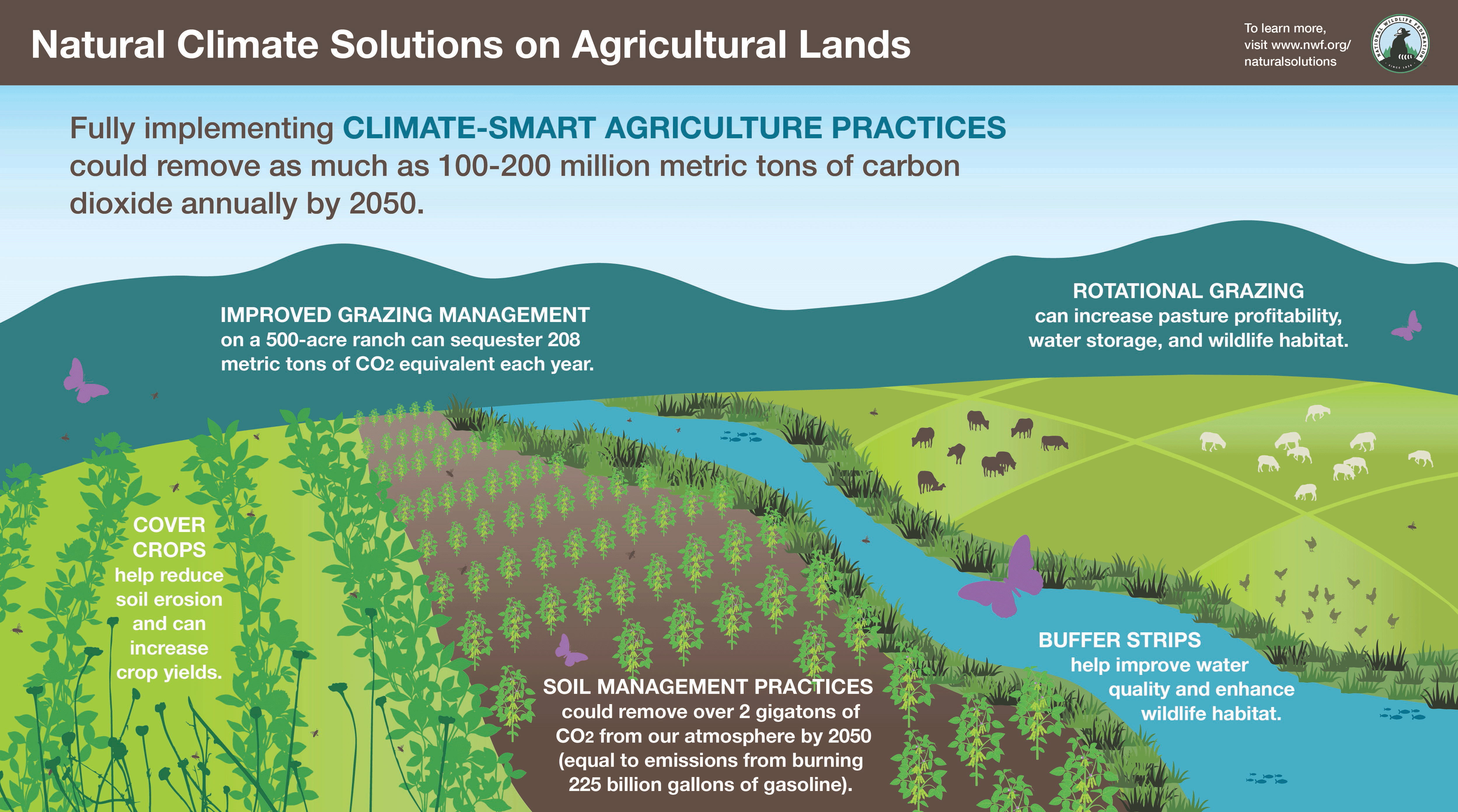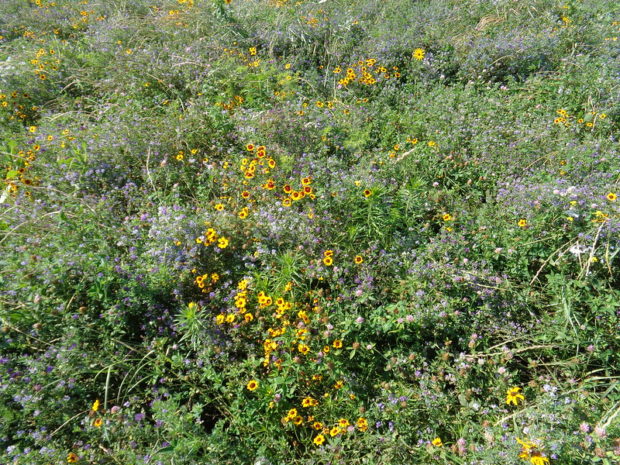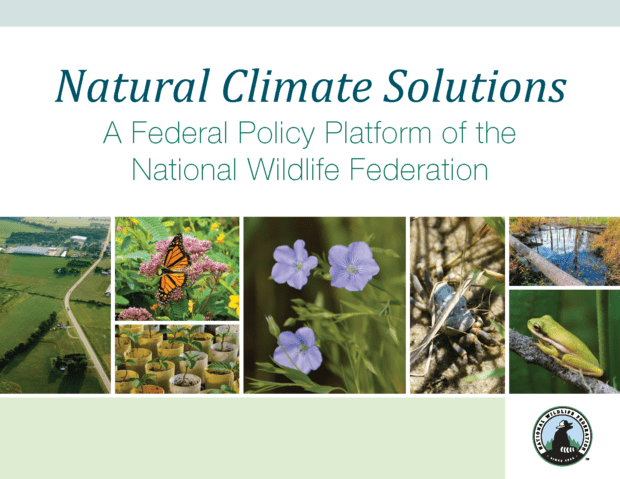We have much more to do and your continued support is needed now more than ever.
Fighting Climate Change on the Farm

There has been a lot of buzz lately about the idea of planting a trillion trees globally to fight climate change by drawing carbon dioxide out of the air. Reforestation and improved forest management remain one of the quickest, most cost-effective means of removing atmospheric carbon. But another method that should not be overlooked is storing carbon in the soil through carbon-smart, wildlife-friendly agricultural practices on farms and ranches.
Carbon is an essential part of the growing cycle of plants, and plants will impart their carbon into the soil over time, where it feeds microorganisms or is retained in the soil through the formation of humus. Even in many types of forests, more carbon is actually found in the soil than in all the tree biomass living above it.
But while soils in forests can remain undisturbed for decades or centuries, agricultural soils often are constantly being turned over, prodded, and stomped on in the process of planting and growing crops and livestock. All of this action allows carbon to be released back into the air, where it becomes a greenhouse gas contributing to climate change. Careful management of the soil and employing strategies to maximize soil carbon, however, have great potential to make working farms and ranches carbon sinks while also improving their bottom line by increasing productivity.

Recent studies estimate that comprehensive agricultural carbon management in this country could remove as much as 100-200 million metric tons of CO2 each year by 2050. If you add up all those annual gains, that would mean farms and ranches could cut as much climate pollution as would come from burning 600 billion gallons of gasoline – enough to power all cars and trucks that run on gasoline in the United States for four years.
The good news is that farmers and ranchers already have the tools, ability, and know-how to start storing more carbon today. One very simple way is to not disturb, or turn over, the soil before planting crops, a practice called no-till farming. This prevents soil carbon from being pushed out into the air. A large portion of farmers are already farming this way, but many more could.
Similarly, some farmers routinely plant cover crops on their fields in between harvesting and planting their major crops like corn, soybeans, or wheat. Cover crops prevent wind and water erosion that would occur on bare fields and also put vital nutrients back into the soil for use by the cash crops. Plus, they provide habitat and forage for wildlife like insects and birds. Finally, by feeding the natural soil biota, they also help build soil carbon. Use of cover crops is slowly on the rise, but it is another practice that is worth accelerating because it is good both for the climate and for the farmer through increased soil productivity, reduced erosion, and improved water retention.

Beyond these two relatively easy steps, farmers could do even more by establishing or expanding vegetated buffer strips along waterways or windbreaks around fields, alternating crop rows with strips planted to native grasses, and putting low-productivity lands into the Conservation Reserve Program. And as for ranchers, they can increase soil carbon in their pastures while also improving livestock health and growth rates through various methods of rotational grazing. All of these practices also carve out or improve habitat to allow wildlife to repopulate agricultural landscapes.
As the carbon benefits of these practices become better understood and ways to monitor soil carbon gains are identified, soil carbon has the potential to yield another revenue stream for farmers and ranchers. A number of carbon markets are emerging to pay agricultural producers to help offset emissions elsewhere, which can offer badly needed revenue to family farms struggling to make ends meet.

It is going to take a concerted effort across all parts of our economy and in all kinds of communities to adequately confront the changing climate. Farmers and ranchers who are already on the front lines of climate-fueled floods, droughts, and heat waves have every incentive to be a part of the solution. State and federal policies can and should be set up to help them succeed. Learn more about the National Wildlife Federation’s Natural Climate Solutions Policy Platform.
This blog is a part of a series on Natural Climate Solutions. More blogs in the series:





















